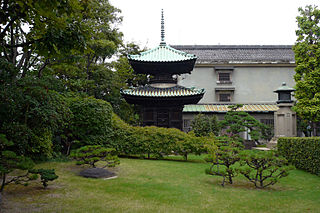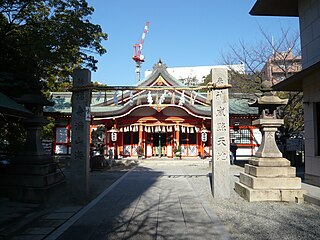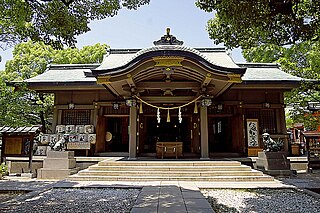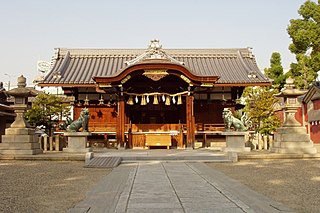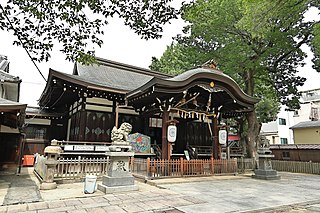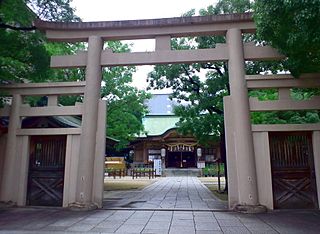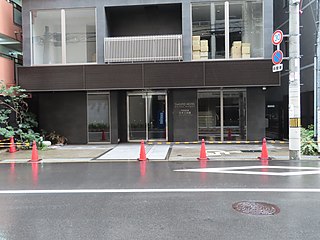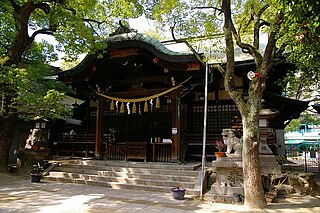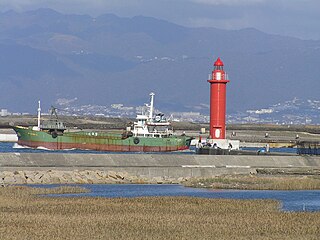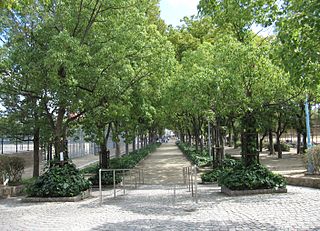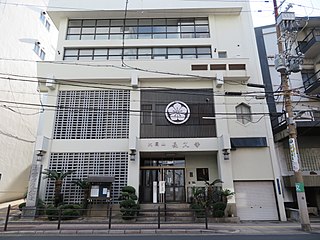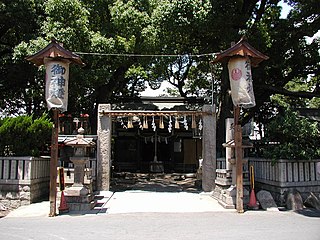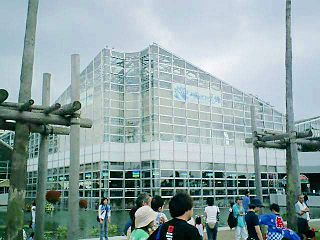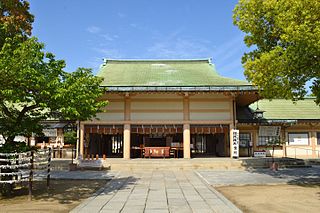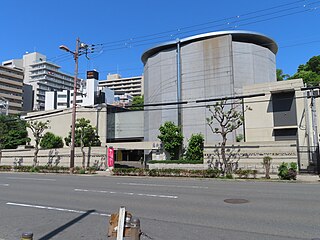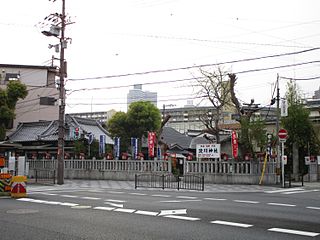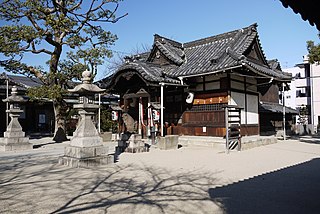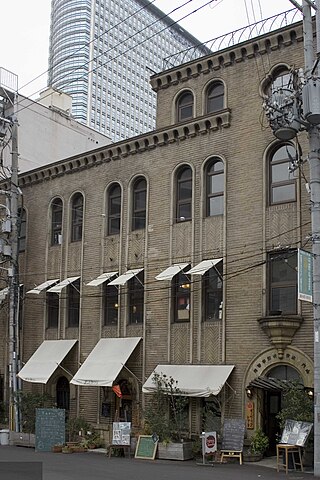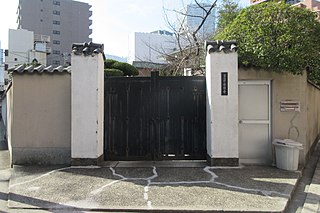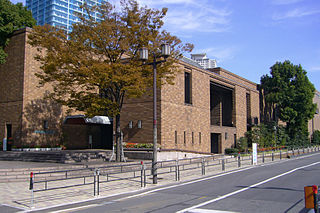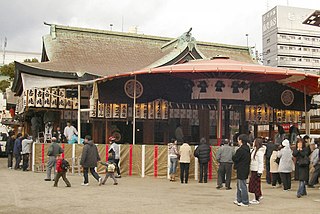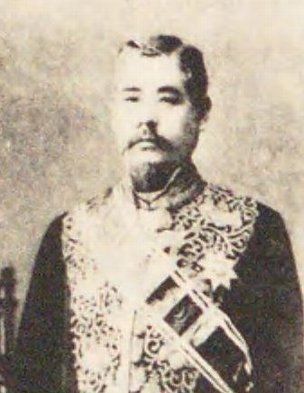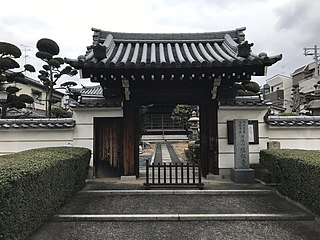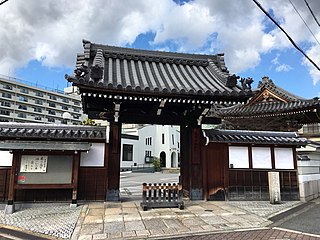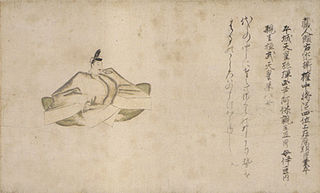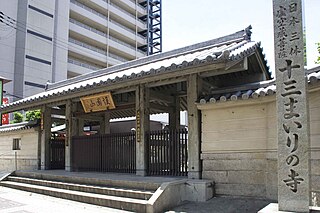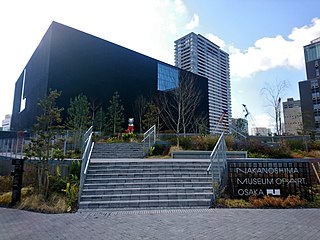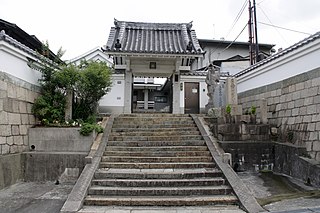87 Sights in Osaka, Japan (with Map and Images)
Legend
Premium Sights
Book tickets, guided tours and activities in Osaka.
Guided Free Walking Tours
Book free guided walking tours in Osaka.
Welcome to your journey through the most beautiful sights in Osaka, Japan! Whether you want to discover the city's historical treasures or experience its modern highlights, you'll find everything your heart desires here. Be inspired by our selection and plan your unforgettable adventure in Osaka. Dive into the diversity of this fascinating city and discover everything it has to offer.
Sightseeing Tours in OsakaActivities in OsakaShinsekai is an old neighbourhood located next to south Osaka City's downtown "Minami" area. The neighbourhood was created in 1912 with New York as a model for its southern half and Paris for its northern half. At this location, a Luna Park amusement park operated from 1912 until it closed in 1923. The centrepiece of the neighbourhood was Tsutenkaku Tower.
Shitennō-ji is a Buddhist temple in Ōsaka, Japan. It is also known as Arahaka-ji, Nanba-ji, or Mitsu-ji. The temple is sometimes regarded as the first Buddhist and oldest officially administered temple in Japan, although the temple complex and buildings have been rebuilt over the centuries, with the last reconstruction taking place in 1963. Shortly after World War II, Shitennō-ji became independent of the parent Tendai sect and formed the Wa sect of Buddhism.
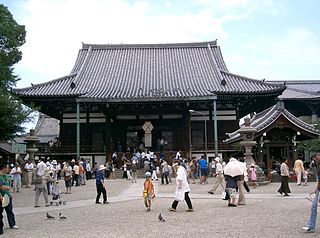
Isshin-ji (一心寺) is a Pure Land Buddhist temple in Osaka, Japan. Starting in the Meiji period, thirteen images have been formed, each incorporating the ashes of tens of thousands of devotees. The annual burial ceremony on 21 April in turn draws tens of thousands of worshippers.
Osaka Castle is a Japanese castle in Chūō-ku, Osaka, Japan. The castle is one of Japan's most famous landmarks and played a major role in the unification of Japan during the sixteenth century of the Azuchi–Momoyama period.
Osaka Castle Park is a public urban park and historical site situated at Osaka-Jō in Chūō-ku, Osaka, Japan. It lies on the south of the Ōkawa and occupies a large area in the center of the city of Osaka. This park is the second largest park in the city.
6. Aleph Osaka Training Center
Aleph , better known by their former name Aum Shinrikyo , is a Japanese new religious movement and doomsday cult founded by Shoko Asahara in 1987. It carried out the deadly Tokyo subway sarin attack in 1995 and was found to have been responsible for the Matsumoto sarin attack the previous year.
7. Despicable Me: Minion Mayhem

Despicable Me Minion Mayhem is an animated simulator ride attraction located at Universal Studios Florida, Universal Studios Hollywood, Universal Studios Japan, and Universal Studios Beijing, as well as upcoming to Universal Studios Singapore. The attraction is based on Universal Pictures and Illumination's animated film Despicable Me (2010) and its franchise. While it is an opening day attraction in Beijing, it replaced Jimmy Neutron's Nicktoon Blast in Florida, T2-3D: Battle Across Time in Hollywood, Back to the Future: The Ride in Japan and Madagascar: A Crate Adventure in Singapore.
8. NMB48 Theatre
NMB48 is a Japanese idol group that debuted in 2011 as the second sister group to AKB48, produced by Yasushi Akimoto. NMB48 is named after the Namba district in Osaka city of Osaka Prefecture, where the group is based. The group performs at the NMB48 Theater, which is located in the basement of the Yes-Namba Building in Namba, Osaka. The group has sold over 9 million CDs in Japan.
9. Yoshimoto Manzai Theatre
Yoshimoto Manzai Theater is a comedy theater that opened on December 1, 2014 in Namba Senmae, Chuo-ku, Osaka, Japan. It is located on the 5th floor of the YES-NAMBA Building, opposite the Namba Grand Hanazuki. It is commonly known as Mangeki.
10. ABC Hall
The Asahi Broadcasting Group Holdings Corporation is a certified broadcasting holding company headquartered in Osaka, Japan. Until March 31, 2018, it was a unified radio and television broadcaster serving in the Kansai region. On April 1, 2018, its radio and television broadcasting divisions were spun off into two subsidiaries, with Asahi Radio Broadcasting Corporation taking over the radio broadcasting business, and Asahi Television Broadcasting Corporation took over television broadcasting.
11. Naniwa Palace Site
Naniwa-no-Miya was the palace of Emperor Ojin during the late Yayoi period to the Kofun period, located in Naniwa Okuma. It was the residence of Emperor Nintoku, the leader of the Yamato state known as the Great King and the founder of the Kawachi dynasty, at Naniwa Takatsu-no-Miya. From the Asuka period to the Nara period, the capital returned to Naniwa (present-day Osaka) and an ancient palace was built around Hoenzaka. It served as the imperial capital for about 150 years from 645 to 793. Naniwa-no-Miya was the first to have a clear structure for the emperor's residence, politics, and ceremonial activities, which was later adopted by subsequent palaces. It is said that the use of the country name Japan and the era name began at Naniwa-no-Miya, where Emperor Kōtoku issued the Edict of Reform, designating Naniwa-no-Miya as Japan's first capital in Article 2. The theory that Naniwa Takatsu-no-Miya, the residence of Emperor Nintoku, was also located in the vicinity of Naniwa-no-Miya is considered the most credible. The site is designated as a national historic site.
12. Osaka City Central Public Hall
Osaka City Central Public Hall is an assembly facility located in Nakanoshima, Kita-ku, Osaka. Important Cultural Property of Japan. As of 2024, it is operated by the SPS Group, a consortium of Suntory Publicity Service Co., Ltd. and the Osaka Foundation for the Promotion of Education and Culture, on behalf of Osaka City as the designated administrator.
13. Tobita Shinchi
Tobita Shinchi (飛田新地), also known as Tobita Yūkaku (飛田遊廓), is the largest of the brothel districts in Osaka, and also the largest in western Japan. It is located in the Sanno 3-chōme area of Nishinari-ku, Osaka. Tobita Shinchi dates from the Taishō period. To circumvent the anti-prostitution laws, the brothels operate largely under the guise of being "Japanese-style restaurants" (Ryoutei).
14. The Symphony Hall
The Symphony Hall is Japan's first hall dedicated to classical music concerts, located in Oyodonan 2-chome, Kita-ku, Osaka-shi, Osaka, Japan. It was built as part of the 30th anniversary of the founding of Asahi Broadcasting. It has received high praise both domestically and internationally in terms of acoustics.
15. Kids Plaza Osaka
Kids Plaza Osaka (Kids Plaza Osaka) is a children's museum, children's center, and science museum located in the lower part of Kantele Ogimachi Square, where Kansai Television Broadcasting is headquartered, located in Ogimachi 2-chome, Kita-ku, Osaka-shi, Osaka Prefecture. In this section, Kantele Ogimachi Square, which will be located, is also described.
16. Osaka Prefectural Museum of Kamigata Comedy and Performing Arts
The Osaka Prefectural Kamigata Performing Arts Museum (Osaka Furitsukami ga Engei Shiryokan, commonly known as Wach Kamigata) is a facility for collecting and preserving materials related to Kamigata performing arts, located in Namba Senmae, Chuo-ku, Osaka. Opened in 1996.
17. Sumiyoshi Taisha
Sumiyoshi-taisha (住吉大社), also known as Sumiyoshi Grand Shrine, is a Shinto shrine in Sumiyoshi-ku, Osaka, Osaka Prefecture, Japan. It is the main shrine of all the Sumiyoshi shrines. It gives its name to a style of shrine architecture known as Sumiyoshi-zukuri.
18. Tennoji Zoo
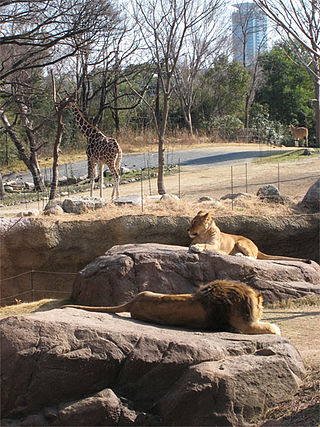
Tennōji Zoo (天王寺動物園) is a 11-hectare (27-acre) zoo located at Tennōji Park in Tennōji-ku, Osaka, Japan, opened on January 1, 1915. It is the third zoo to be built in Japan and is located southwest of the Shitennō-ji temple, the first Buddhist temple in Japan.
19. Osaka Culturarium at Tempozan
Osaka Bunka Kan Tenpozan is an art museum located in Tempozan Harbor Village in Minato-ku, Osaka, Japan. In February 2013, the name was changed from "Suntory Museum", and Suntory has not been involved in the operation since 2011 (Heisei 23).
20. Tsūtenkaku
Tsūtenkaku , owned by Tsūtenkaku Kanko Co., Ltd. , is a tower and well-known landmark of Osaka, Japan and advertises Hitachi. It is located in the Shinsekai district of Naniwa-ku, Osaka. Its total height is 103 metres (338 ft); the main observation deck is at a height of 91 metres (299 ft).
21. The National Museum of Art, Osaka
The National Museum of Art, Osaka is a subterranean Japanese art museum located on the island of Nakanoshima, located between the Dōjima River and the Tosabori River, about 10 minutes west of Higobashi Station in central Osaka.
22. 和光寺

Wakoji Temple is a temple of the Jodo sect located in Kitahorie, Nishi-ku, Osaka. The name of the mountain is Mt. Lotus Pond. The main temple is Zenkoji-style Amida Sanson. A nun serves as the abbot. Settsu Province 88 places No. 3. Known by the common name of Amida Pond, the name of Amida Ikesuji, one of the north-south arterial roads of Osaka City, is derived from this temple.
23. Catholic Tamatsukuri Church
St. Mary's Cathedral in Osaka is a cathedral of the Catholic Tamazuri Church located in Tamazoku, Chuo-ku, Osaka, Japan. It is called "Osaka Cathedral" because it is the episcopal cathedral of the Catholic Archdiocese of Osaka. The saint commemorated by the church is "Our Lady of the Immaculate Conception (Saint Mary)".
24. American Village
Amerikamura is a sizable retail and entertainment area near Shinsaibashi in the Chūō-ku district of Osaka, Japan. It is usually referred to by locals as "Ame-mura". Amerikamura is an area stretching from Nagahori Street to Dotonbori, located in the west side of the Shinsaibashi station.
25. Tempozan Ferris Wheel
Tempozan Ferris Wheel is a 112 meter tall ferris wheel located in Osaka, Japan, at Tempozan Harbor Village, next to Osaka Aquarium Kaiyukan, one of the largest aquariums in the world. The wheel has a height of 112.5 metres (369 ft) and diameter of 100 metres (330 ft).
26. Honganji Temple Tsumura Betsuin
Honganji Tsumura Betsuin is a temple of the Jodo Shinshu Honganji sect located in Honmachi, Chuo-ku, Osaka. A separate temple of Motoyama Nishi Honganji. The name of the mountain is Mt. Ryukoku. The honzon is Amitabha. It is commonly known as Kitamido.
27. Osaka Shochiku‑za
Osaka Shochikuza is a theater located in Dotonbori 1-chome, Chuo Ward, Osaka City, Osaka Prefecture. It is operated by Shochiku Co., Ltd. This theater is not included in the five playhouses known as "Dotonbori Gozas," which have their origins in the Edo period.
28. Osaka Science Museum
The Osaka Science Museum is a science museum in Naka-no-shima, Kita-ku, Osaka, Japan. The museum is located between the Dōjima River and the Tosabori River, above Osaka's subterranean National Museum of Art. Opened in 1989, the museum was constructed to mark the 100th anniversary of Osaka City. The construction was funded through a 6.5 billion yen donation toward building costs from Kansai Electric. Its theme is "The Universe and Energy". Before the war a similar museum opened in 1937. It was known as the Osaka City Electricity Science Museum and it was both the first science museum and the first planetarium in Japan.
29. 大阪護國神社
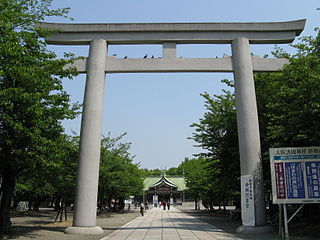
Osaka Gokoku Shrine is a shrine located in Suminoe Ward, Osaka City. It enshrines over 105,000 spirits of the war dead from Osaka Prefecture and those with connections to it, making it the third largest in terms of the number of enshrined deities among Gokoku shrines, following Okinawa Prefectural Gokoku Shrine and Fukuoka Prefectural Gokoku Shrine. It is currently a branch shrine of the Association of Shinto Shrines.
30. Osaka Museum of Housing and Living
Located in Kita-ku, Osaka City, Osaka Prefecture, Osaka City Museum is a city museum dedicated to the history and culture of urban life in Osaka City. The official name of the museum is Osaka Municipal Museum of Housing. It is located in the Osaka Municipal Housing Information Center Building. It exhibits materials and models of residences in Osaka City from the late Edo period to the post-World War II period.
31. Shoman-in; Aizen-do
Shomanin is a temple of the Japanese sect located in Tennoji Ward, Osaka. The name of the mountain is Mt. Araryo. The honzon is Aizen Myo. It is also called Aizendo. Shitennoji Betsuin. Nishikoku Aizen 17 Sacred Grounds No. 1. Shingon Esoteric Buddhism Katsuhi-ryu Nemoto Dojo. The Taho Pagoda is the oldest wooden structure in Osaka.
32. Kiyomizudera
Kiyomizudera Temple is a temple of the Japanese sect located in Reincho, Tennoji-ku, Osaka. The name of the mountain is Mt. Arisu. The main Buddha is the Bodhisattva of the eleven-sided, thousand-handed Kansei-on. A branch of the Shitennoji Temple.
33. 綿業会館
Cotton Industry Kaikan is a Renaissance-style historical building located in Semba, Chuo-ku, Osaka, Japan. Stand facing the Sankyubashi muscle. On December 25, 2003, it was designated as an important cultural property of Japan, and in 2007 it was recognized as an industrial heritage site for modernization.
34. Mt. Tenpo
Mount Tenpō located in Minato-ku, Osaka is currently Japan's second lowest mountain. The definition of a "mountain" used here is any elevation described as a mountain on a topographic map published by the Geographical Survey Institute of Japan, though it is disputed that the mountain lacks credibility because it is not a natural part of the landscape. The mountain's peak is 4.53 meters above sea level, and will bear more resemblance to a hill than a mountain to the casual observer. A small port is located nearby, and much of the mountain's surface has been converted into a park.
35. 杭全神社
Kumata Jinja is a shrine originally located in Hiranomiya-cho, Hirano-ku, Osaka, Japan. The former company name was Fusha. He is revered as the god of the Sakagami clan and the god of Hirano Town. The summer festival (Hirano Danjiri Festival) is held every year from July 11 to 14, and driving on the nearby National Route 25 is restricted.
36. Osaka International Peace Center
The Osaka International Peace Center , also known as Peace Osaka , is a peace museum established in August 1991 based in the city of Osaka, Japan. It focuses on the destruction of the city during World War II and the broader themes of the tragedy of war and the importance of peace. It is funded by Osaka city and Osaka Prefecture.
37. 三光神社
Sankō Shrine is a Shinto shrine on a hill named Mt. Sanada in Tennōji-ku, Osaka, Japan. It is notable for being the possible location of a legendary tunnel used during the 17th century Siege of Osaka.
38. Yasui-jinja Shrine
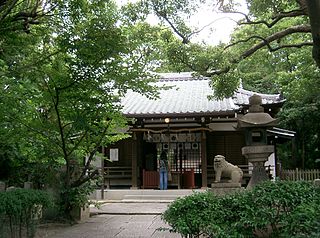
Yasui Shrine is a shrine located in the Tennoji Ward of Osaka City. Its former status was that of a village shrine. It is also known as Yasui Tenmangu and Yasui Jinja. It is the site where Sanada Nobushige was killed in battle.
39. Mitsutera
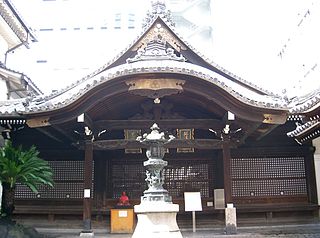
Mitsu-ji Temple is a quasi-separate main temple of the Shingon sect of the Omuro sect located in Shinsaibashi-suji, Chuo-ku, Osaka. The name of the mountain is Shippo Mountain. The main Buddha is the eleven-sided Kannon Bodhisattva. It faces Midosuji and is known locally as "Mitera-san" or "Minami no Kannon-san".
40. 山本能楽堂
Yamamoto no Gagakudo is a Noh theater located in Chuo-ku, Osaka, Osaka Prefecture, and a public interest incorporated foundation that owns and operates it. Since the building has a full-fledged Noh stage inside a three-story wooden building in the urban area, it was registered as a national registered tangible cultural property on November 29, 2006 (Heisei 18). From 2011 to 2014, as part of the Agency for Cultural Affairs' "Project for the Public Utilization of Important Buildings, etc.," large-scale renovation work was carried out, including seismic reinforcement work, equipment work, and sanitary work, and the functions of the facility were enhanced such as the use of color LED stage lighting and floor heating throughout the building. Although it is an old building, the latest technology has been added, and it has been reborn as a unique space where a modern space confronts a building engraved with the shadows of history. The concept of the renovation is an "open Noh theater". The highlight (audience seats) is the pier seats, which are equipped with "folding chairs" proposed by Junzo Yoshimura, one of Japan's leading architects, and are wheelchair accessible. The pine on the mirror plate is made by the brush of Kanade Matsuno.
41. Goryo Jinja Shrine
Goryōjinja is a shrine located in Awaji-cho, Chuo-ku, Osaka. The former company name was Fusha. In addition, the plaque of the front torii gate is written as Spirit Palace. Although our company is called the Spirit Shrine, it has nothing to do with the belief in the Holy Spirit.
42. 水道記念館
The Waterworks Memorial Museum is a science museum established by the Osaka City Waterworks Bureau in Higashiyodogawa Ward, Osaka City, where you can enjoy learning about the history of Osaka City's water supply. In the past, many freshwater fish and shellfish in the Lake Biwa and Yodo River systems were raised.
43. 大依羅神社
Ooyasami Shrine is a shrine located in Sumiyoshi Ward, Osaka City. It is a Shikinai Shrine (a major shrine) with a former rank of a prefectural shrine. Currently, it is an independent shrine not affiliated with the Association of Shinto Shrines.
44. 鶴満寺
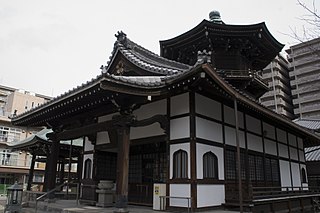
Kakumanji Temple is a temple of the Tendai Shinsei sect located in Kita-ku, Osaka. The name of the mountain is Mt. Unmatsu. The honzon is Amitabha. Kannon-do is the third temple of the 33 places in the New West Country, and the main temple is Koyasu Kannon.
45. 南岳山 舎利尊勝寺
Sharisonshoji Temple is a temple of the Yellow Wood sect located at 1-2-36 Shariji, Ikuno-ku, Osaka, Japan. The common name is Shariji, and the common name is also the place name of Ikuno Ward (Shariji).
46. Orix Theater
The Orix Theater is a 2,400-seat concert hall in Nishi-ku, Osaka, Japan. Artists that performed in the main hall include Black Sabbath, Kiss, Pink Floyd, Deep Purple, Whitesnake, Robin Trower, Rainbow, Queen, Santana, The Jackson 5, James Brown, UFO, Iron Maiden, Red Velvet, Amalia Rodrigues, NCT 127, and Jun. K from 2PM. It officially opened on 14 April 1968 and was the largest concert hall in Osaka at the time. The complex included a smaller hall, lodging facilities and two restaurants. The building was sold in October 2009 to Orix Real Estate, who currently run it under the name the Orix Theater.
47. Oe-jinja Shrine
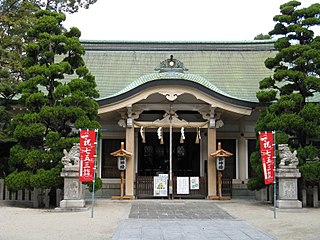
Ooe Shrine is a shrine located in Yuhigaoka-cho, Tennoji Ward, Osaka City (Yuhigaoka area, part of the former Tennoji Kitamura and Tennoji Village in Higashinari District). Its former status was that of a local shrine.
48. 六大院
Rokudaiin is a temple located in the town of Baiza, Tennoji-ku, Osaka. The name of the mountain is Mt. Koya, Osaka. Koyasan Shingon Buddhism, Betsu Honzan. Koyasan Kongoko Osaka City Headquarters. The honzon is Fudo Myō and Kobo Daishi. As a separate temple, there is Kongo-ji Temple in Terakawa, Daito City, Osaka Prefecture.
49. Nakanoshima Park
The Nakanoshima Park is the first public park opened by Osaka in 1891, after its foundation as a city. It is located in Kita ward, on the Nakanoshima sandbank, lying between Dōjima and Tosabori Rivers. The 11 hectare park houses public facilities such as Osaka Central Public Hall, Osaka Prefectural Nakanoshima Library and Museum of Oriental Ceramics. It also holds a rose garden. The City Hall of Osaka building is located on its west end.
50. National Bunraku Theater (Nipponbashi or Nippombashi)
The National Bunraku Theatre is a complex consisting of two halls and an exhibition room, located in Chūō-ku, Osaka, Japan. The complex was opened in 1984 as the fourth national theatre of the country, to become the headquarters of bunraku.
51. Fujita Art Museum
The Fujita Art Museum is one of the largest private collections in the Kansai region. The collection was assembled by Fujita Denzaburō and his descendants. It was installed in a storehouse on the family property in Osaka.
52. Tamatsukuri Inari Shrine
Tamatsukuri Inari Shrine is a shrine dedicated to the Shinto kami ('god') Inari. Its construction can be traced to 12 BCE, and Inari was enshrined there by Toyotomi Hideyoshi in the 1580s to protect Osaka Castle.
53. 堀川戎神社
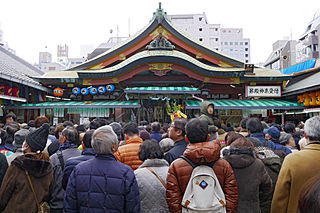
Horikawa Ebi Shrine is a shrine located in Kita-ku, Osaka. The former company name is Murasha. In Osaka City and the area, it is known as the god of prosperous business, along with the Imamiya Ebi Shrine in the southern part of Osaka City and the Nishinomiya Shrine in Nishinomiya City, Hyogo Prefecture. Known as "Horikawa's Ebessan" or "Kita's Ebessan", the 10-day Ebisu is held from January 9 to 11 every year.
54. 高津宮
Kōzu-gū is a Shinto Shrine in Ōsaka, Japan. It honors Emperor Nintoku. He was the 16th emperor. He reigned from 313 to 399. Emperor Nintoku named the area Kōzu-gū. This area is now known as Ōsaka.
55. 野田恵美須神社
Noda Ebisu Shrine is a shrine located in Fukushima Ward, Osaka City. (According to the Osaka Prefecture religious corporation registry, it is simply referred to as "Ebisu Shrine" in the torii and abbreviated records, but it is commonly called "Noda Ebisu Shrine.")
56. 御幸森天神宮
Miyukimori Tenjingu Shrine is a shrine located in Momotani 3-chome, Ikuno-ku, Osaka City (formerly Inokaino Village, Higashio District, Settsu Province). He enshrines Emperor Hitoku, Naohiko and Shinosaka Hiko, and is the chief deity of Inokai Nomura.
57. 坐摩神社
Ikasuri Shrine is a major Shinto shrine located in central Osaka, Japan. Its annual festival is on April 22. In the former modern system of ranked Shinto shrines it was an imperial shrine of the second rank or kanpei-chūsha (官幣中社). It was also the ichinomiya of the former Settsu Province. It enshrines five kami known as ikasuri no kami or zama no kami: Ikui no kami (生井神), Sakui no kami (福井神), Tsunagai no kami (綱長井神), Hahiki no kami (波比祇神), and Asuha no kami (阿須波神); collectively known as Zamagami (座摩神)
58. 日本工芸館
Japan Crafts Museum is a museum located in Naniwa Ward, Osaka City, that aims to preserve, nurture and disseminate traditional folk crafts. It was established by Chuichi Miyake in 1950 as a base for the activities of the Osaka branch of the Japan Folk Crafts Association.
59. 福島天満宮
Fukushima Tenmangu is a shrine located in Fukushima 2-chome, Fukushima-ku, Osaka. The former company name is Murasha. It is also commonly referred to as "the god of heaven on Fukushima". One of the "25 Worship of the Suga Sacred Shrine" (the twelfth).
60. 阿遅速遅神社
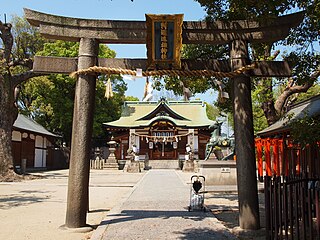
Achihayao Shrine is a shrine located in Tsurumi Ward, Osaka City, Osaka Prefecture. It is listed in the Engishiki Shinmeicho as a Shikinai shrine, with its former status being a local shrine. During the Edo period, it was referred to as Hachiken Shrine, but it was identified as Achihayao Shrine in the Engishiki by Narikawa Seisuke, who placed the "Achihayao Shrine name stone". Since then, it has been called Achihayao Shrine.
61. Osaka Nankou Bird Sanctuary
Osaka Nanko Bird Sanctuary is a port green space (port environmental improvement facility) developed as a bird sanctuary located in Suminoe Ward, Osaka City. It is operated by the Osaka City Port Authority.
62. 泉尾公園
Izuo Park is a city park (district park) located in Izumio, Taisho-ku, Osaka. It has been designated as a temporary shelter. It has a multi-purpose ground and a baseball field on the west side, a ground golf course on the southeast, and two gateball fields. With a park area of 45,293 m2, it is the second largest park in Taisho Ward after Chishima Park.
63. Syoten-Ryokokuinn
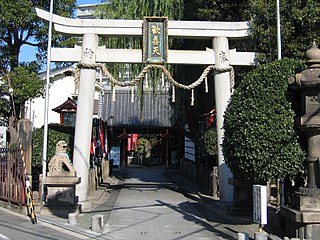
Ryotokuin is a temple of the Toji Shingon sect located in Fukushima-ku, Osaka. The name of the mountain is Mt. Ruyi. The main temple is the quasi-hu Kannon and the eleven-sided Kannon (Daisei Joy Heaven). It is popularly known as Urae Seiten.
64. 長久寺
Chokyuji is a Nichiren temple located in Chuo Ward, Osaka. Its mountain name is Daienzan. The main deities are the One Tower and Two Honored Ones. It enshrines Fukurokuju, one of the Seven Lucky Gods of Osaka.
65. 桑津天神社
Kuwazu Tenjinja is a shrine located in Kuwazu 3-chome, Higashi-Sumiyoshi-ku, Osaka. There are a total of 11 deities, including the god Shohiko, Sugawara Michishin, Susano, Kiinada Hiyori, Nomi Shukuro, Tenji Roof Life, Cloth Sword Ball Life, Tenyu Receiving Life, Saruta Bikojin, Kyozu Lord Life, and Ken Tsuchi Life. The former company name is Murasha.
66. 咲くやこの花館
The Sakuya Konohana Kan (咲くやこの花館) is a botanical garden set within one of the world's largest greenhouses, located in Tsurumi Ryokuchi park at 2-163 Ryokuchi Koen, Tsurumi-ku, Osaka, Japan. It is open daily except Mondays; an admission fee is charged.
67. 生國魂神社行宮
Ikukunitama Shrine is a Shinto shrine located in Tennōji-ku, Osaka Prefecture, Japan. Its main festival is held annually on September 9. It was formerly an imperial shrine of the first rank in the Modern system of ranked Shinto Shrines.
68. 應典院
Ōten-in is the last temple of the Jodo Buddhist temple located in Tennoji-ku, Osaka, Osaka Prefecture. At the time of its founding, it was the head of the pagoda that was opened as a retreat for the third generation of Dairenji, the Oath of Honor Zaikei.
69. 淀川神社
Yodogawa Shrine is a shrine located in Kema-cho, Miyakojima-ku, Osaka. In 1953 (Showa 28), it was established in the precincts of the 15 shrines in the form of a joint enshrinement of the gods of the 15 shrines that enshrined the gods of the former Tomobuchi Village and the gods of the Yawata Daijingu (Hachiman Shrine) that enshrined the gods of the former Kema Village.
70. Ohmiya Shrine
Omiya is a shrine located in Daido Minami, Higashiyodogawa Ward, Osaka City. It is also referred to by its old name, Omiya Shrine. In ancient times, it was called Zao Gongen, Gozu Tenno, Omiya Daigongen, and Omiya Daimyojin.
71. 山内ビル
Yamauchi Building is a historical building located in Tosabori, Nishi-ku, Osaka. It is a four-story reinforced concrete building with Spanish brown tiles. The official name is "Kaori Yamauchi Law & Patent Office" Currently, the plate with the word "incense" has disappeared for some reason, either because of the deterioration of the building
72. 鵲森宮
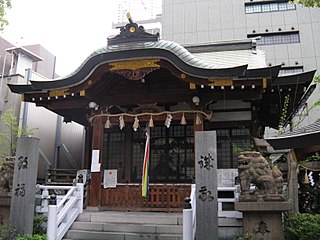
Kasasagi Morinomiya is a shrine located in the center of Morinomiya, Chuo-ku, Osaka. It is a Shikiuchi company, and the former company name is Fusha. It is commonly known as Morinomiya Shrine, and is the origin of the surrounding place names Morinomiya and Morinomiya.
73. 本傳寺
Hondenji Temple is a temple of Nichiren Buddhism located in Usagano-cho, Kita-ku, Osaka, Japan. The name of the mountain is Mt. Takateru. The former main temple is Ōmotoyama Honkuji Temple (Rokujōmon-ryū), Shinshi Hoen.
74. Museum of Oriental Ceramics
The Museum of Oriental Ceramics, Osaka (大阪市立東洋陶磁美術館) is a Japanese art museum and regarded as one of the best ceramic-collections in the world. This museum collects, studies, conserves, exhibits and interprets East Asian ceramics, which mainly came from ancient China and Korea. The world-famous Ataka Collection, donated by the 21 companies of the Sumitomo Group, as well as the Rhee Byung-Chang Collection, provide the public an aesthetic experience with first-class collection.
75. 今宮戎神社
Imamiya Ebisu Shrine is a Shinto shrine located in Naniwa-ku, Osaka Prefecture, Japan. According to legend, it was established in 600 during the reign of Empress Suiko. Its annual festival is held from January 9 to 11. The kami enshrined here included Amaterasu (天照皇大神), Kotoshironushi, Susanoo-no-Mikoto (素盞鳴尊), Tsukuyomi-no-Mikoto (月読尊), and Wakahiru-me (稚日女尊).
76. 法清寺
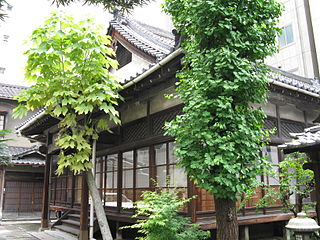
Hoseiji Temple is a Nichiren Buddhist temple located in Sonezaki, Kita-ku, Osaka, Japan. The name of the mountain is Mt. Kwangchi. The former main temple is Kyoto Honmanji Temple, Ryugenkai. It is commonly known as a temple.
77. 西村捨三翁
Nishimura Sutezō was a Japanese businessman and politician. He was a veteran of the Boshin War. He was the fourth Governor of Okinawa Prefecture (1883–1886) and the sixth Governor of Osaka (1889–1891).
78. 国分寺
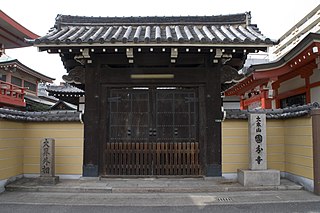
Kokubun-ji (国分寺) is a Buddhist temple in Kita-ku, Osaka, Osaka Prefecture, Japan. It was founded in 655 during the reign of Empress Kōgyoku, and is affiliated with Shingon Buddhism. It is also known as Nagara Kokubun-ji (長柄国分寺).
79. 瑞松寺
Zuishōji Temple is a temple of the Jodo Shinshu Honganji sect located in Higashiyodogawa-ku, Osaka, Osaka Prefecture. The name of the mountain is Mt. Tear Pond. It is said that the name of the mountain is due to the fact that in the Kamakura period, Taira Kagekiyo accidentally killed his uncle and washed his bloody sword in the pond while choking on tears.
80. 雲雷寺
Unraiji is a Nichiren sect temple located in Nakadera, Chuo Ward, Osaka City, Osaka Prefecture. Its mountain name is Myohōzan. The former head temple is Minobusan Kuonji (Minobu school), the temple is affiliated with the Choshi school, and the chief priest is from the Enshi school. Nearby, there are many other Nichiren sect temples such as Jōkokuji, Renkōji, Shōbōji, Enmyōji, Hōshōji, Hōsenji, Yakuōji, Myōjuji, Honyōji, and Myōtokuji.
81. Abeno Harukas Art Museum
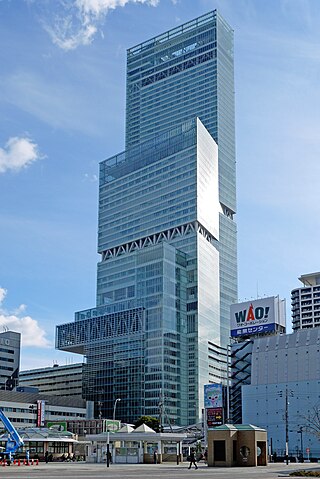
Abeno Harukas Art Museum opened in Abeno-ku, Ōsaka, Japan, in 2014. Specializing in temporary exhibitions, it is located on the 16th floor of Abeno Harukas, Japan's tallest building, named after the ward of Abeno and the expression harukasu (晴るかす), meaning 'brightening up'. The Museum's inaugural director is art historian Asano Shūgō , director of Kintetsu Railway Company's other cultural initiative, the Yamato Bunkakan.
82. 湯木美術館
Yuki Museum of Art opened in Chūō-ku, Osaka, Japan, in 1987. The collection, built up by Yuki Teiichi (湯木貞一) of kaiseki restaurant Kitchō fame, includes twelve Important Cultural Properties and three Important Art Objects.
83. 太平寺
Taihei-ji (太平寺) is a Buddhist temple in Osaka Prefecture, Japan. It was founded in about 1555 during the tumultuous Senguoku period, and it is affiliated with Sōtō school of Japanese Zen Buddhism.
84. Hōzen-ji
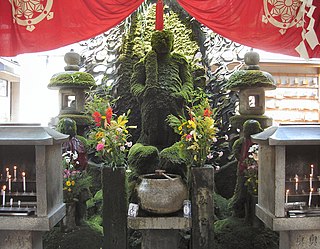
Hōzen-ji (法善寺) is a Buddhist temple of the Jōdo-shū sect in Chūō-ku, Osaka, Japan. The temple is located in the Dotonbori district, near Namba Station. It has a reputation in Japan for helping women who are about to give birth.
85. Nakanoshima Museum of Art, Osaka
Nakanoshima Museum of Art, Osaka opened in Nakanoshima, Kita-ku, Osaka, Japan in 2022. The museum is located in the central Nakanoshima district of Osaka. It is one of Japan's newest and most important art museums, with a collection of over 6,000 works of modern and contemporary art and design from the mid-19th century to the present day. Highlights include works by international artists such as Amedeo Modigliani, Salvador Dalí, René Magritte, Jean-Michel Basquiat and Frank Stella, as well as major Japanese artists such as Yūzō Saeki and Jirō Yoshihara, founder of the avant-garde Gutai group. Of particular note is the extensive collection of works by Saeki Yūzō, an artist with close ties to Osaka.
86. Osaka Museum of History
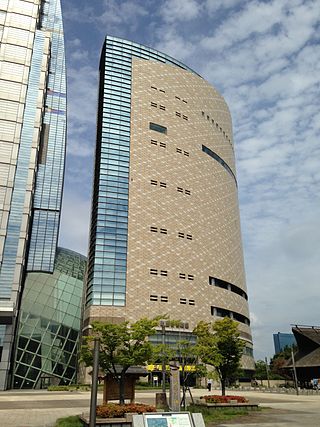
Osaka Museum of History opened in Chūō-ku, Ōsaka, Japan in 2001. The project architects were César Pelli & Associates and Nihon Sekkei. It is adjoined by an atrium to the NHK Osaka Broadcasting Center, which was designed by the same architects and built at the same time. The former Osaka City Museum closed earlier the same year. Over four floors, the displays tell the history of the city from the time of the Former Naniwa Palace, located in the area now occupied by the museum. Remains of a warehouse, walls, and water supply facilities for the palace are also on view in the basement. In 2005, the collection numbered some 100,000 objects. By 2016, it had grown to 138,595 objects, while a further 17,632 items were on deposit at the museum.
87. 心眼寺
Shinganji Temple is a temple of the Pure Land sect located in Tennoji Ward, Osaka. The name of the mountain is Mt. Sanada. The honzon is Amitabha. The temple crest is the same sixpenny as the family crest of the Sanada family.
Share
How likely are you to recommend us?
Disclaimer Please be aware of your surroundings and do not enter private property. We are not liable for any damages that occur during the tours.
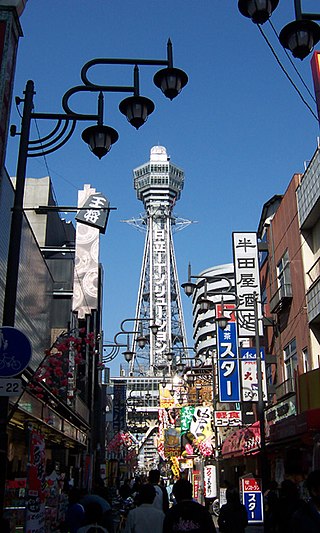
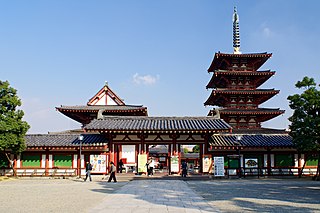
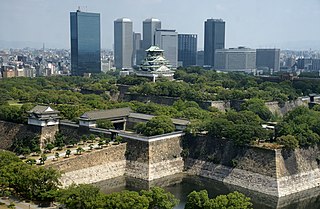
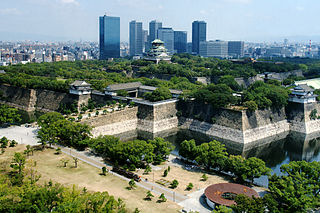
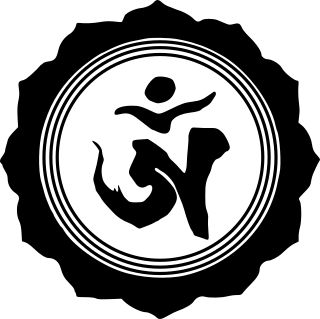
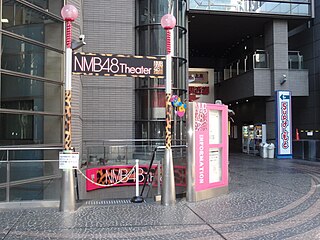
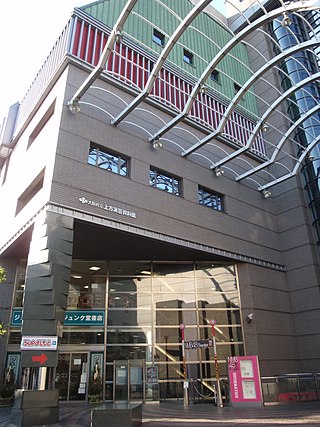
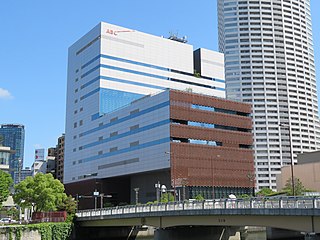
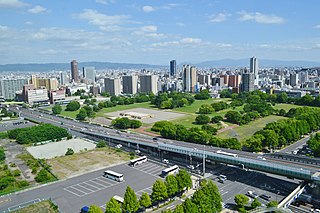
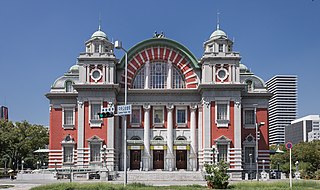
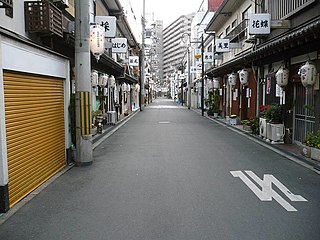
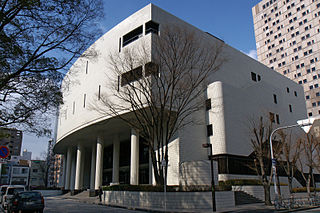
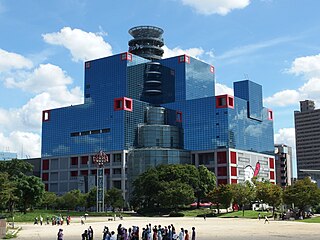
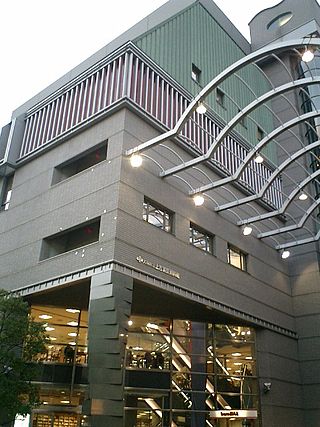
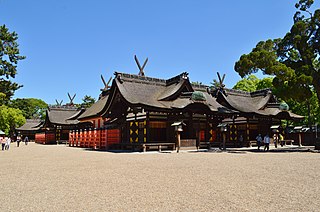
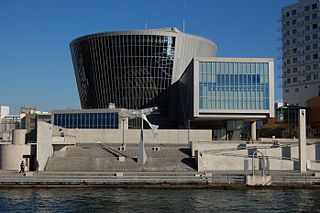
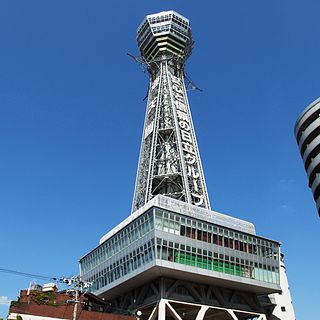
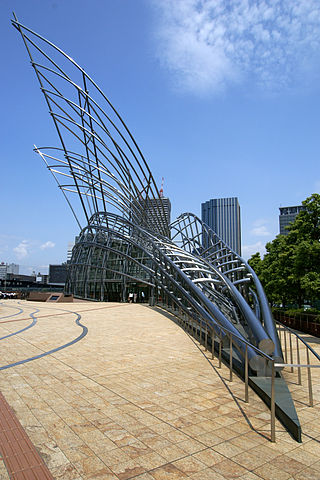
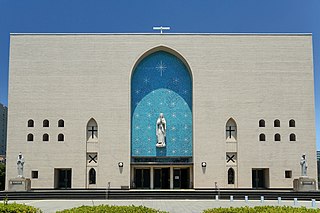
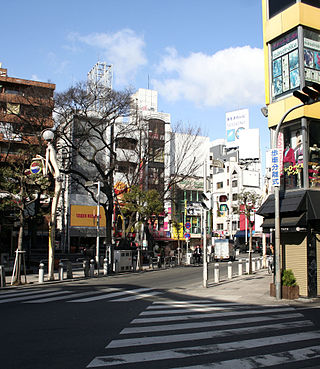
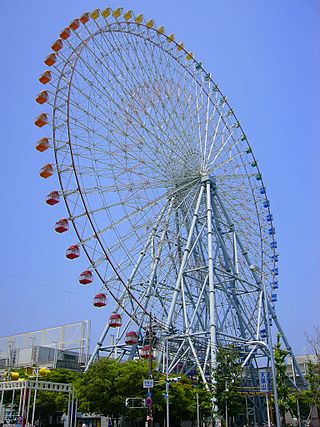
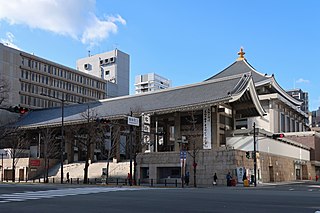
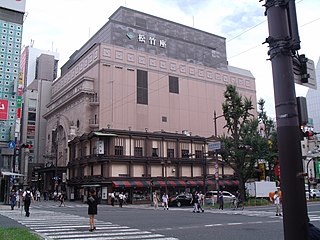
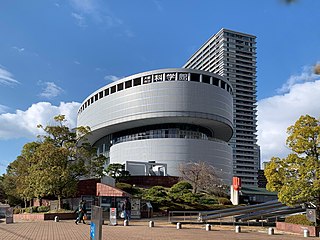
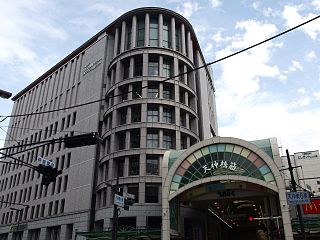
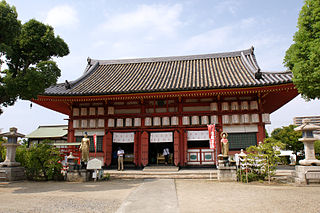
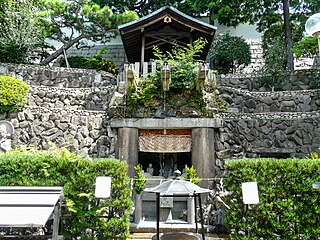
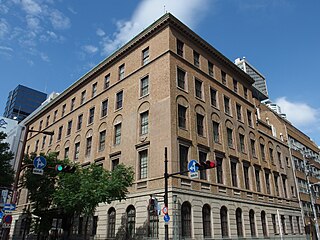
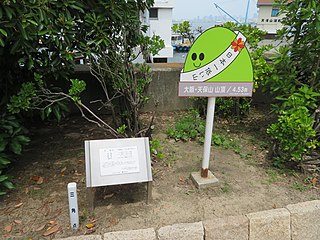
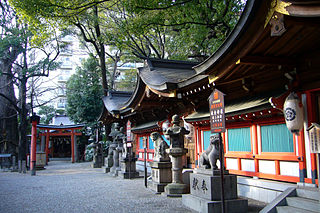
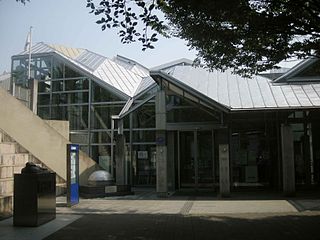
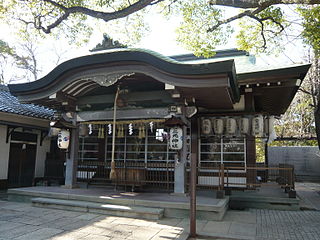
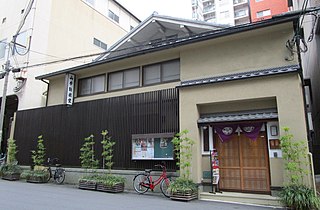
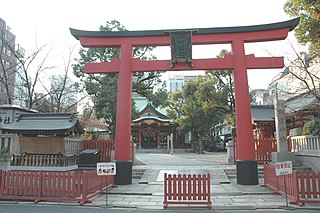
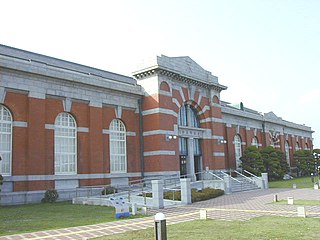
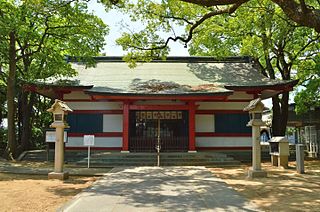
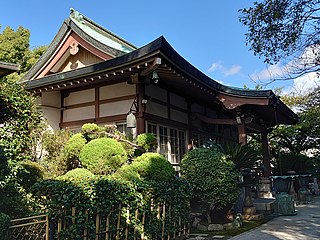
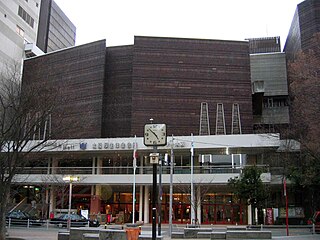
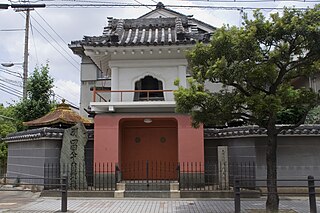
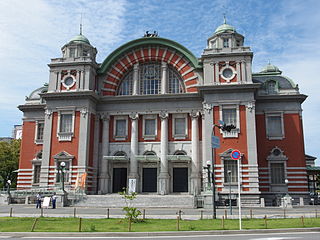
.jpg)
